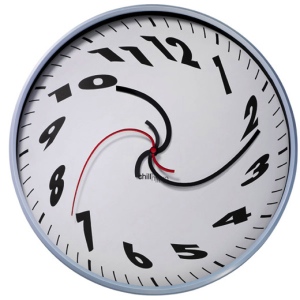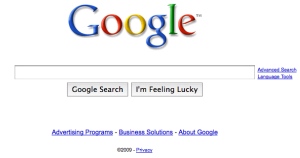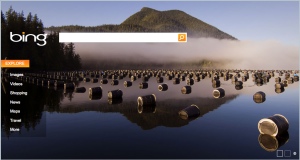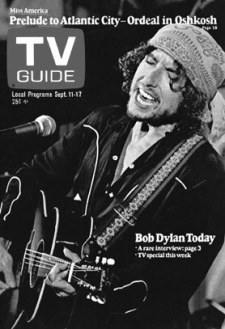
In thinking about building things on the web, I stopped to consider the raw materials from which we build. HTML markup retrieved from a web server and rendered by a browser, that’s where it all started. But even at that early moment, there was the implied structure of the document. The markup that existed was there to render visible the form of the academic paper. Headings, paragraphs, quotations, tabular data display– these are the formal elements of the document.
And very early on, the metaphor of the page gained purchase. We nodded our heads and spoke of the ‘web page.’ The static web page and the static book page have similar kinds of boundaries. The web page could theoretically be infinitely long, but the usability experts indicated that users didn’t scroll much beyond the length of a book’s page. And just like that, an infinity was tamed. The edge of the world was discovered.
As the content on a web page became dynamic, infinity migrated to the combinations and permutations a database could produce. As long as the data continued to grow and change, the items presented in a particular page could be of an infinite variety. The boundaries to the north, south, east and west remained consistent with the book’s page, but the objects emerging from the depths of the backend could be practically without end.
The document and the page have been structurally ingrained into the architecture of content management systems such that the smallest building block becomes a page linked to a hierarchical document tree. The elements that can be placed into a page are those for which the system has templates. And while most systems allow the manual writing and insertion of raw HTML, it’s a practice that is discouraged because it ruins the uniformity of the CMS’s output. The content management system is an industrial machine for creating hierarchically organized sets of pages.
The other major organizational structure on the web is time-sequenced content. To some extent, news media takes this approach to organization, new material is published each day to replace the material from the previous day. What’s lacking in the model is the continuity of sequence. Yesterday’s news is fish wrap, rather than the next step in a sequence. Blog posts and Tweets (micromessages) have the form of a sequenced set of texts by an author or group of authors. In this sense they are more like the output of a columnist or the writer of serial fiction. Blog posts can also be assigned categories and tags so that they can be sequenced across other conceptual frames. Tweets don’t have the extra infrastructure to house categories and tags, so the practice of adding a hashtag has been bolted on. More elegant solutions like the original track feature have failed to resurface.
Rather than referring to time-sequenced pages, here we more commonly talk about items in a feed. We’re interested in the source of the feed in order to gauge its authority, along with it’s velocity and trajectory. And unlike a hierarchical organization of pages, the items in a time-sequenced feed need have no semantic relationship to each other. The items are such that they can be organized in an arbitrary large variety of collections either within a particular feed or among a diverse set of feeds.

The page and the item converge at the URL (Uniform Resource Locator). Because of our page-centric view of the web, here we’d like to say this is the point where the item becomes a page. And yet, the web becomes much more interesting if we resist this temptation. The item has no native context, the page wants to own its context. The item allows the user to create a collection, a playlist, a feed that suits her own needs, wants and desires. The page needs to reinforce the hierarchy of which it is a part. The key to the dynamic context of the item is that it both has a URL and can contain a URL, and it doesn’t have a single right context.
Information architecture has largely concerned itself with pages and hierarchies, and the economics of the web have centered around the page-view model. As the item begins to emerge as a basic building block, it will be very interesting to see what kind of economics and architectural patterns arise. The containers, the playlists, where we assemble items will command an interesting new role in the assignment of context. And in this landscape, the item and the context are always already social, two-way and dynamic.
Comments closed




